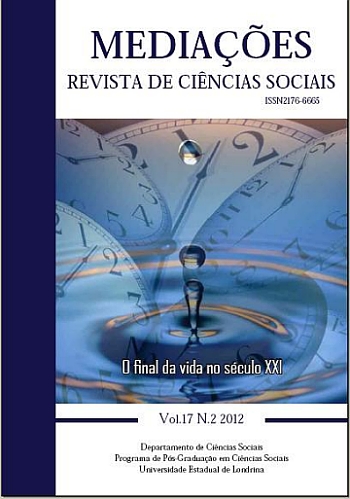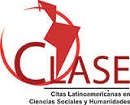To feed the World: genetically modified food, (in) safe diet and the risks to human health and the environment
DOI:
https://doi.org/10.5433/2176-6665.2012v17n2p272Keywords:
Transgenics, Food security, Biotechnology, EpistemologyAbstract
This article intends to discuss briefly the safe diet in view of the use of the so called “Transgenic Technologies” which have marked the New Green Revolution (the 2o. GR) since the 1990´s. The debate revolves around an epistemological criticism of the paradigms which project ideals of productivity, domination and free use of the environment in the relation between man and nature (highlighted here because of its food production). The emergent benefits of such practices in the economical and political discourses contrast with the evidence of danger to human health, which are based on scientific experiments: more than a humanitarian movement of “fighting hunger”, the current policies of safe diet have been presented as a practical result on how tributary reality of paradigms which are based on other forms of (proto)capitalism of the past, such as the colonialism/imperialism, is seen. In order to understand this phenomenon in a broad sense, an epistemological criticism is imperative.Downloads
References
AMOS, Brit. Death of the bees. genetically modified crops and the decline of bee colonies in North America. Global Research - Centre for Research on Globalization. Aug. 2011.
ANDRIOLI, Antônio Inácio. O escândalo da liberação de transgênicos no Brasil. Revista Espaço Acadêmico, Maringá, n. 82, p. 1-3, mar. 2008.
ENTENDA a crise dos alimentos. Disponível em: https://www1.folha.uol.com.br/folha/especial/2008/crisedosalimentos/. Folha Online, 25 abr. 2008.
EUROPEAN COMMISSION. A decade of EU-funded GMO research (2001-2010). Brussels: European Commission, 2010.
EUROPEAN FOOD SAFETY AUTHORITY - EFSA. Safety and nutritional assessment of GM plants and derived food and feed: the role of animal feeding trials”: report of the EFSA GMO panel working group on animal feeding trials. Food and Chemical Toxicology, Oxford, n. 46, p. 52–70, 2008.
GENETICALLY engineered food: an overview. Washington: Food & Water Watch, 2012.
GOETTLICH, Paul. Will genetically engineered foods feed the world? 2006.
HOFFMANN, Rodolfo. Pobreza, insegurança alimentar e desnutrição no Brasil. Estudos Avançados, São Paulo, v. 9, n. 24, p. 159-172, 1995.
KNEEN, Brewster. Restructuring food for corporate profit: the corporate genetics of Cargill and Monsanto. Agriculture and Human Values, Netherlands, n. 16, p. 161-167, 1999.
LATOUR, Bruno. Jamais fomos modernos: ensaio de antropologia simétrica. Rio de Janeiro: Ed. 34, 1994.
LATOUR, Bruno; WOOLGAR, Steve. A vida de laboratório: a produção dos fatos científicos. Rio de Janeiro: Relume Dumará, 1997.
MALATESTA, Manuela et al. A long-term study on female mice fed on a genetically modified soybean: effects on liver ageing. Histochemistry and Cell Biology, Berlin, v. 130, n. 5, p. 967-977, 2008.
MALUF, Renato Sergio Jamil. Segurança alimentar e nutricional. Petrópolis, Rio de Janeiro: Vozes, 2007.
MONSANTO COMPANY. Backgrounder: glyphosate and standard toxicology studies, 2002.
MONSANTO COMPANY. Backgrounder: summary of human risk assessment and safety evaluation on Glyphosate and Roundup Herbicide. 2005.
NATIONAL ACADEMY OF SCIENCES. Safety of genetically engineered foods: approaches to assessing unintended health effects. Washington: National Academies Press, 2004.
ROESSING, Antônio Carlos; LAZZAROTTO, Joelsio José. Soja transgênica no Brasil: situação atual e perspectivas para os próximos anos. Londrina: Embrapa, 2004.
SANTOS, Boaventura de Sousa. et al. (org.). Semear outras soluções: os caminhos da biodiversidade e dos conhecimentos rivais. Porto: Afrontamento, 2004.
SCHIEBINGUER, Londa. Lost knowledge, bodies of ignorance, and the poverty of taxonomy as illustrated by the curious fate of flos pavonis, an abortifacient. In: JONES, Caroline; GALISON, Peter (ed.). Picturing science, producing art. New York:
Routledge, 1998. p. 125-144.
SÉRALINI, Gilles-Eric; CELLIER, Vendomois; DOMINIQUE, Jöel Spiroux. New analysis of a rat feeding study with a genetically modified maize reveals signs of hepatorenal toxicity. Archive of Environmental Contamination and Toxicology, New York, v. 52, n. 4, p. 596-602, may 2007.
SHRADER-FRECHETTE, Kristin. Property rights and genetic engineering: developing nations at risk. Science and Engineering Ethics, England, v. 11, n. 1, p. 137-149, 2005.
VECCHIO, L. et al. Ultrastructural analysis of testes from mice fed on genetically modified soybean. European Journal of Histochemistry, Pavia, v. 48, p. 449–454, 2004.
WILLIAMS, Gary M.; KROES, Robert; MUNRO, Ian C. Safety evaluation and risk assessment of the herbicide roundup and its active ingredient, glyphosate, for humans. Regulatory Toxicology and Pharmacology, New York, v. 31, p. 117-165, 2000.
Downloads
Published
How to Cite
Issue
Section
License
Copyright on articles published in Mediações belongs to the author(s): in the case of partial or entire republication of the original publication, we ask author(s) to indicate the original publication in the periodical.
Mediações uses the Creative Commons Attribution 4.0 International license, which allows Open Access, enabling any user to read, download, copy and disseminate its content so long as adequately referenced.
The opinions expressed by the author(s) are their sole responsibility.

































